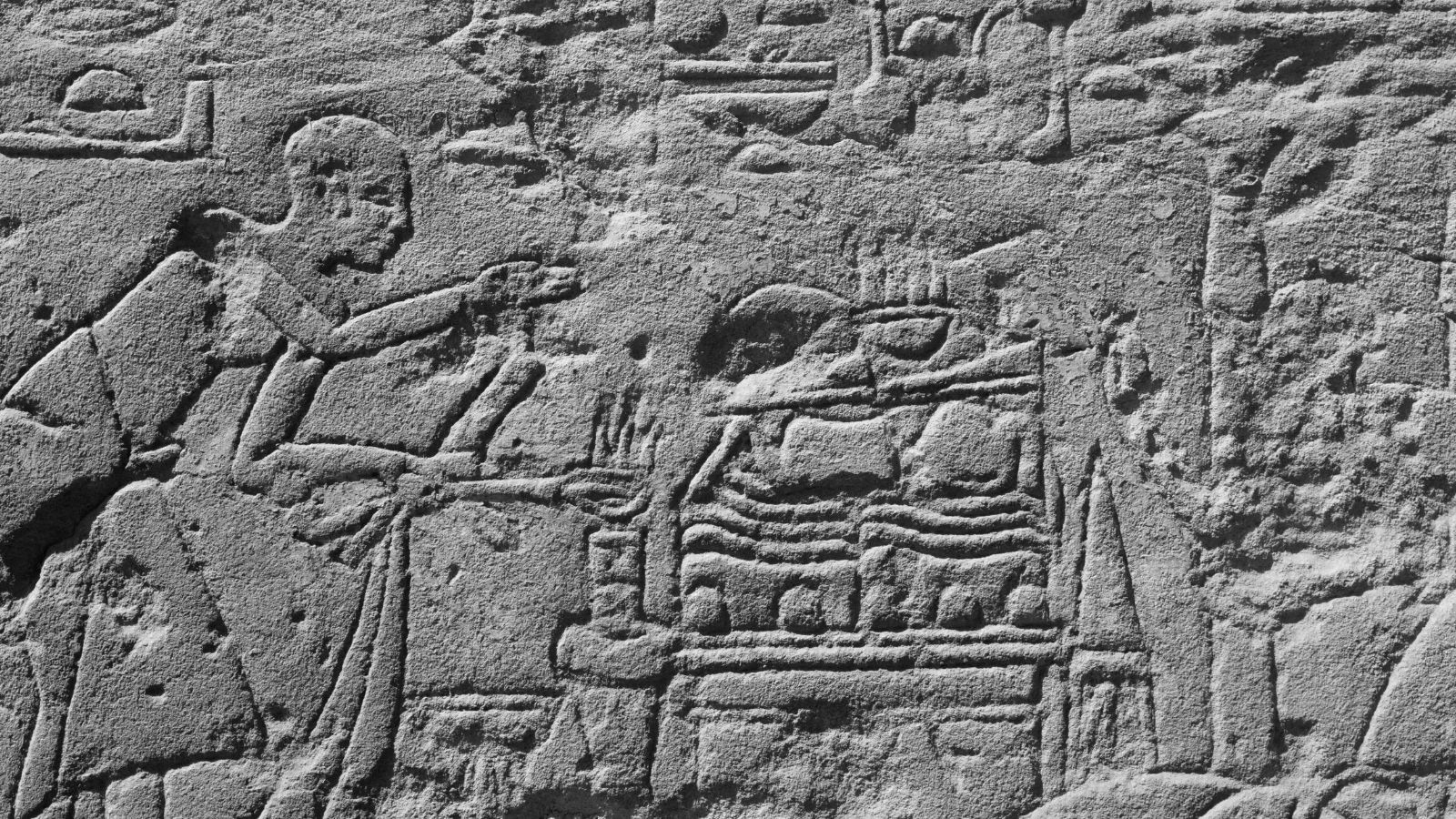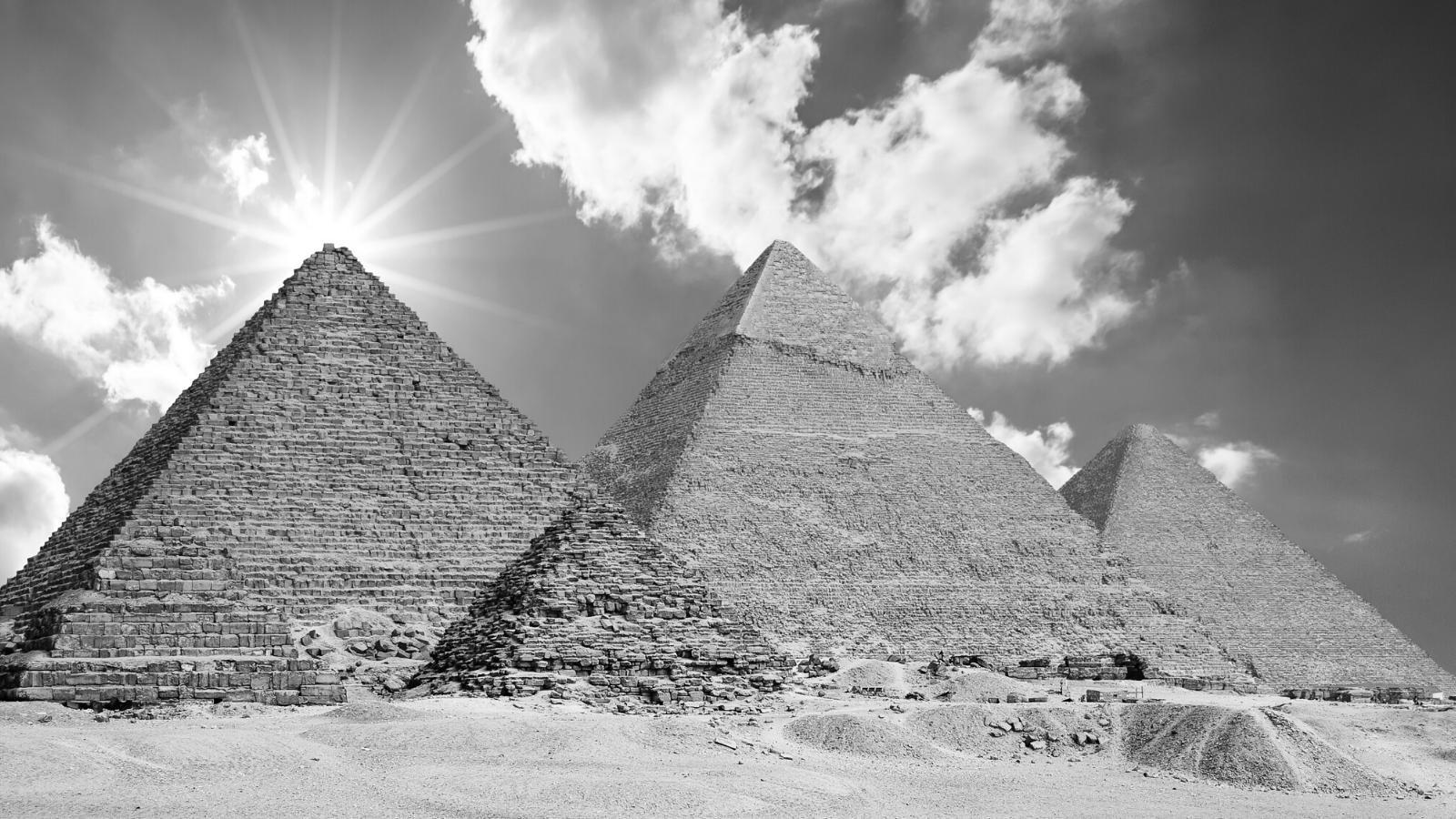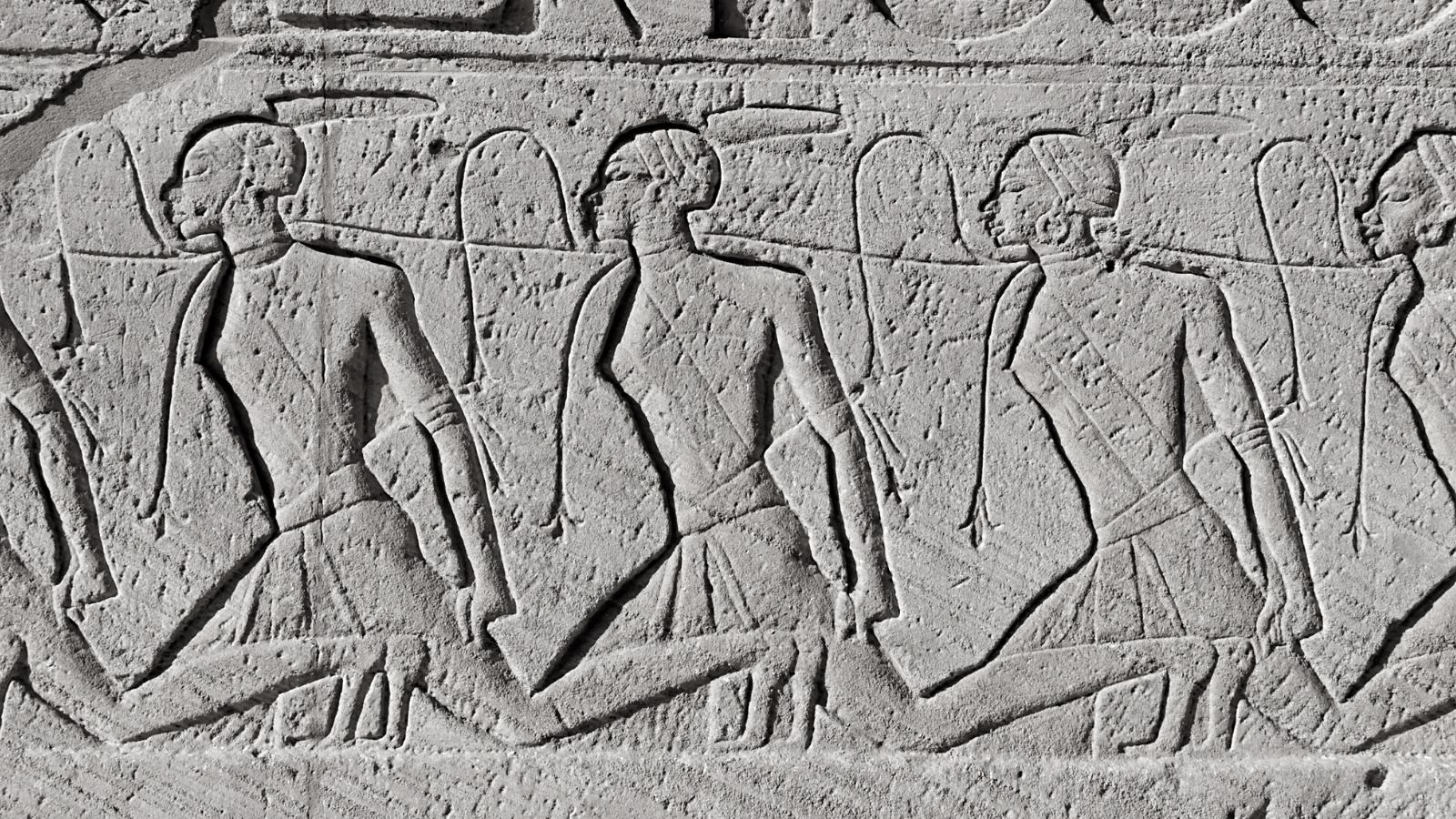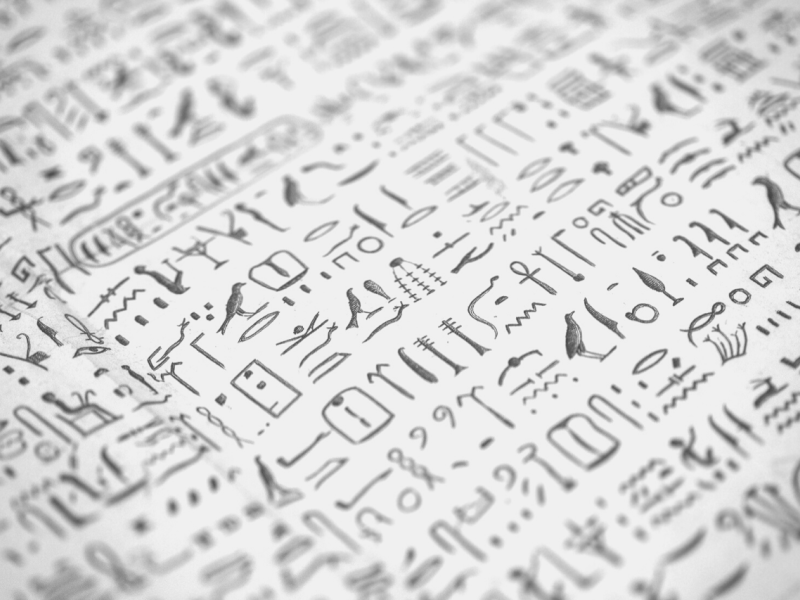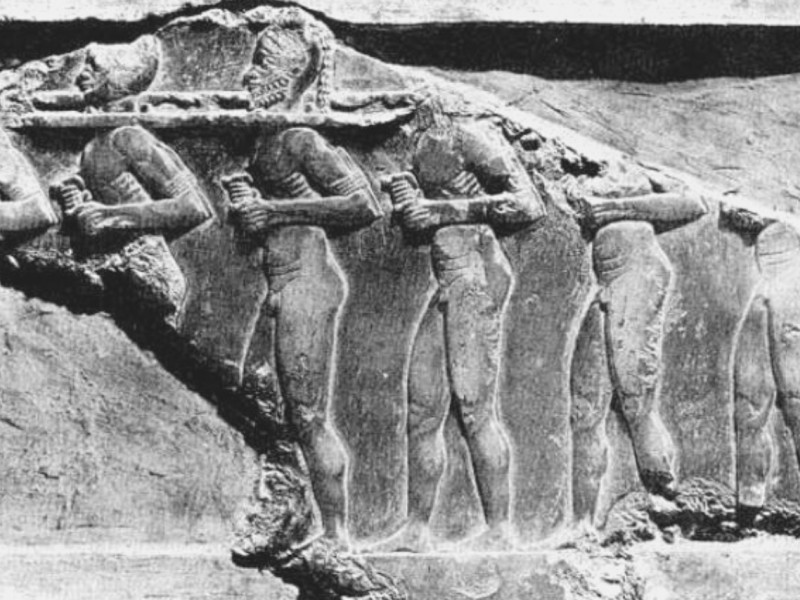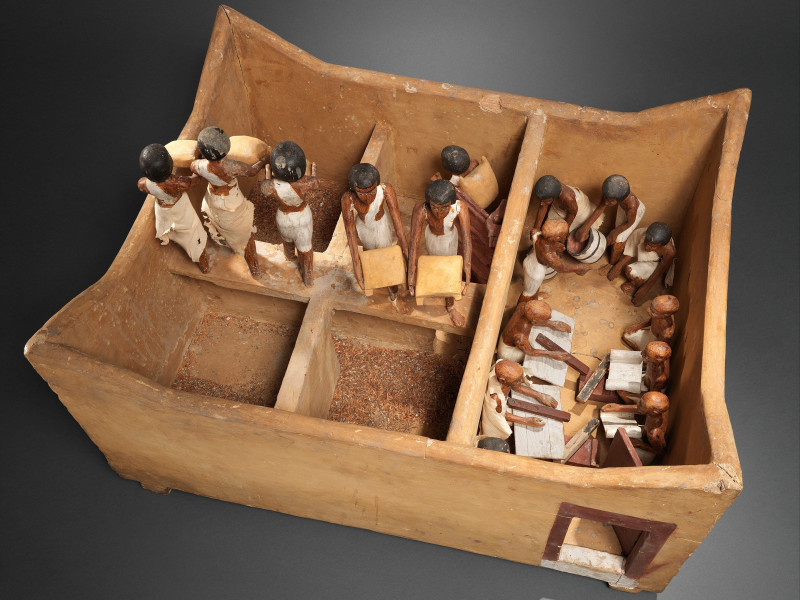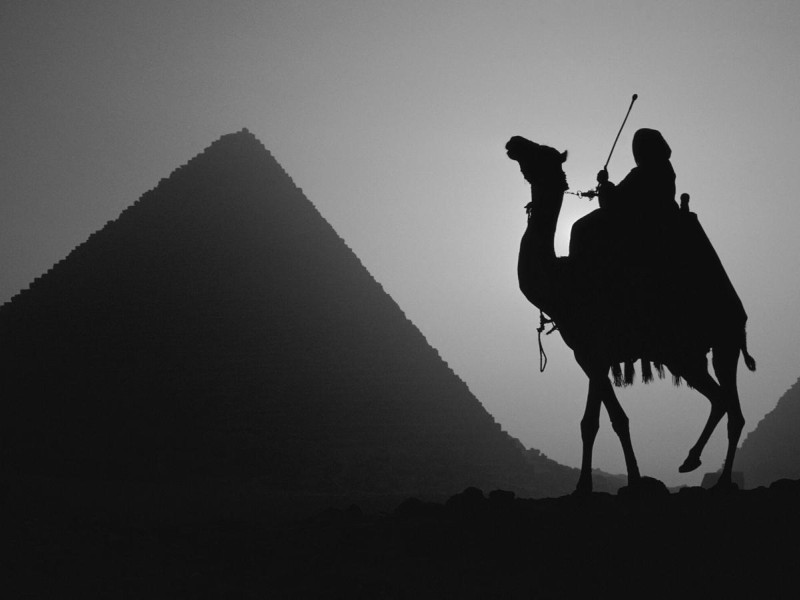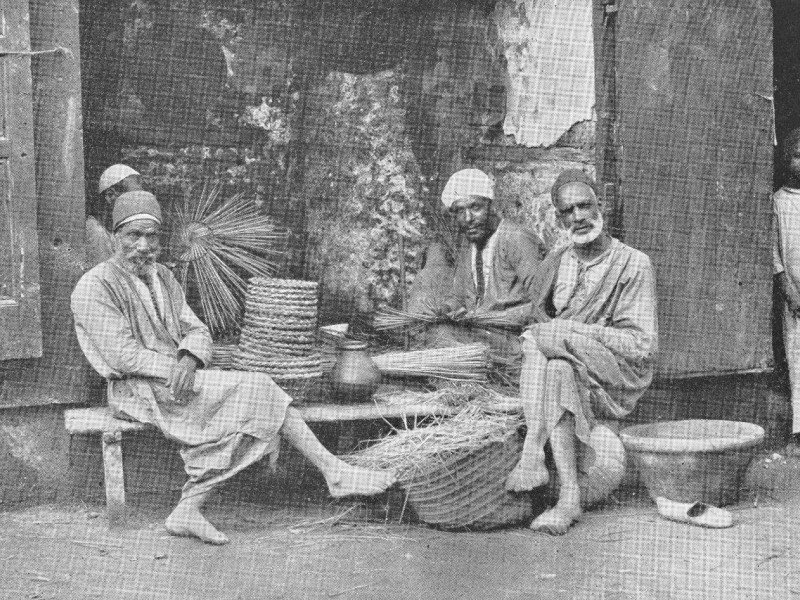Ancient Egyptian Slaves: How Slavery Shaped Egyptian Civilization
Ancient Egyptian slaves existed since the dawn of Egyptian civilization. Each period in the history of ancient Egypt had slaves, although the roles they played were different.
Some slaves became soldiers, others became scribes, whilst some were household servants. Read on to discover the various roles of slaves in ancient Egypt, their treatment and how they brought about enlightenment.
The History of Slavery in Ancient Egypt
It is difficult to pinpoint the exact moment slavery began in ancient Egypt. However, we can be certain that slavery in Egypt was present in Egypt since the Old Kingdom.
It continued right until the 19th Century in Ottoman Egypt though it took different forms. As already discussed, slaves could be obtained internally or from foreign trade markets throughout Egyptian history.
Slavery in the Old Kingdom of Ancient Egypt
In the Old Kingdom, which lasted for about 500 years, the Egyptians’ main source of slaves was through wars. After defeating their enemies in battle, they captured them, transported them to Egypt, and forced them into slavery.
The Egyptian word for slavery in the Old Kingdom was “skrw-’nh,” which meant “bound for life.” Another term used to describe slaves was “hm,” which translates into “laborer or slave.”
How Slaves Were Brought Into Egypt
King Sneferu, who founded the Fourth Kingdom of Old Egypt, dealt in slaves. Available records indicate that he brought captives from his campaigns in Nubia and made them slaves. He also brought slaves from his wars with Libya and Sinai. He then drafted the more experienced slaves, who had fought several battles, into the military.
The other slaves, who were not battle-hardened, went into forced labor. The Pharaohs used them to plow the fields and do other forms of manual work. These slaves played a role in driving the development and civilization of ancient Egypt.
In the Old Kingdom, the indigenes could also sell themselves into slavery due to poverty. Those who owed debts and could not pay became slaves to their creditors. People who were guilty of crimes became slaves as a form of punishment. Any official who was guilty of misusing their power was forced into slavery.
Slavery in the First Intermediate Period of Ancient Egypt
The First Intermediate Period was 150 years during which Egypt was divided between two powers. These were the cities of Het-Nesut, also known as Heracleopolis, and Thebes and Waset (Thebes).
Het-Nesut ruled Lower Egypt while Waset ruled Upper Egypt. During this period, the Egyptians treated slaves with respect and honor, though they were still considered as property.
The main cause of slavery during this period was the inability to pay debts. When debtors could not pay their arrears, they sold their family members, especially women, into slavery. This act was to service the debts owed.
Slavery in the Middle Kingdom of Ancient Egypt
This, however, changed in the Middle Kingdom, which lasted from 2040 – 1782 BC. During this period, Egyptians took slaves from war prisoners by forcing other locals into labor (royal laborers) and criminals. Existing records show the Egyptians coercing slaves to work on farms and other state businesses. The Egyptians got foreign slaves from conquered lands in the Asiatic region.
Slaves in the Middle Kingdom had various statuses. The slaves from Asia were on the same level and treated as state-owned slaves.
The Egyptians even gave the Asiatic slaves Egyptian names though they added the slave’s place of origin to the names. Asiatic slaves were mainly used as servants, hairdressers, fieldworkers, cobblers, gardeners and weavers.
Slavery in the Second Intermediate Period
The Second Intermediate Period brought changes to slavery in ancient Egypt. During this period, slaves could become citizens of Egypt. There were several ways this was possible, and one was through marriage. During this time, the community could also own the slave and the slave’s properties.
Slavery in the New Kingdom
The New Kingdom saw the growth and expansion of Egypt through military conquests. To sustain these conquests, the Egyptians required more soldiers.
Therefore, they drafted more slaves from foreign lands to help in the military campaigns. The Egyptians bought most of these slaves from the Mediterranean market, and some of them came in as captives.
The Mediterranean market was run by the Asiatic Bedouin. These slave traders sometimes kidnapped travelers and sold them on the market as slaves. This period also saw the introduction of slave renting.
During this period, the Egyptian slaves received more humane treatment while the foreign slaves did not enjoy such benefits. The foreign slaves were often traded off or given to others as a reward.
Therefore, the Egyptians regarded them as their personal property. For example, historical sources show that King Thutmose III gifted 150 slaves to Minmose for his contributions in building temples across the land.
Types of Slaves in Ancient Egypt
Ancient Egypt had three main types of slaves. Each type depended on how the slave came into servitude. Also, some types were more prominent in certain periods than others, which we’ll come to later.
However, all the following types of slaves were present throughout the history of Egypt.
Chattel Slavery in Ancient Egypt
Whenever the ancient Egyptians went to war and won, they brought back captives. The Egyptians then forced these captives to serve them. This was known as chattel slavery, and it was not new in ancient times. It was the order of the day.
Not all chattel slaves were captives, as the Egyptians also bought slaves. Sometimes, the Pharaohs bought these captives from prominent slave markets in the Asiatic region.
Once the Pharaohs acquired these captives, they transported and assigned them to various roles in the kingdom. Some chattel slaves were even given out as rewards to deserving citizens of the kingdom.
Other chattel slaves were people who were guilty of various crimes and their punishment included giving up their freedom. This may be for a period of time or a lifetime depending on the type of crime. Some soldiers also got chattel slaves from the Pharaohs as loot.
Chattel Slaves’ Children
When chattel slaves bore children, they became automatic slaves. These children served along with their parents. Chattel slaves received accommodation and food but didn’t get wages. It is also unclear whether chattel slaves could ever become free.
Bonded Slavery in Ancient Egypt
The next type of slavery was the bonded servants. There were two types: Egyptians who sold themselves into servitude, and foreign slaves purchased from the slave market.
Egyptian Slaves
The Egyptians slaves offered themselves to serve their creditors to whom they owed huge debts. This, however, was not of their free choice but forced by their creditors.
Bonded Egyptian servants had no specific period for the end of their slavery.
This was because the terms and conditions were not clearly defined at the beginning of the bondage. Thus, the bonded slaves were left at the mercy of their creditors, who also added the wives and children of the debtors and all their possessions.
By doing this, the debtors/slaves had all their arrears cleared, and the creditors provided their slaves with food and shelter.
Foreign Slaves
The Egyptians also purchased foreign slaves and bonded them as prisoners of war. These were the well-built and strong males who had military experience.
The ancient Egyptians drafted these foreign-bonded slaves into their military and used them for their campaigns. This type of slaves could return to their homelands after serving for some time. However, bonded slaves from Nubia and Libya did not enjoy such privileges.
The Shabti System of Bonded Slavery in Egypt
A type of bonded slavery that was common was the shabti system. According to Egyptologists, the word shabti meant follower, thus, shabtis were slaves who followed their masters to the afterlife. In ancient Egyptian culture, they believed that masters would require these slaves in the afterlife, so ancient Egyptians buried dead masters along with shabtis to serve them.
Also known as Ushabtis, shabtis were figurines that the Egyptians crafted to represent the slaves that a master owned. The Egyptians did not have to put the slaves to death but represented each slave with a figurine.
The more slaves the master owned, the more ushabtis were buried with him. Depending on the wealth and status of the deceased master, the ushabtis were either made of wood or stone.
The shabtis, the human slaves, were promised life after death. The afterlife was a big deal in ancient Egyptian culture and religion, so anyone would do anything to achieve it. The promise of the afterlife was enough payment for the shabtis. The craftsmen designed each figurine according to the role of the slave it represented.
Who Were the Shabtis?
Shabtis could either be Egyptians who sold themselves into slavery or foreign slaves acquired on the market. The slave traders were sure to denote the difficult foreign slaves by placing a yoke on their shoulders.
Other types of equipment used in restraining the slaves were ropes and cords and other weapons called Sheyba. Sometimes, the traders used taming sticks to beat the stubborn slaves into submission.
Forced Labor Slavery in Egypt
The third type of slavery practiced in ancient Egypt was forced labor. This type of Egyptian slaves was only available for specific periods or projects. When the period was over or the project was completed, they were freed.
Forced labor slaves worked in several departments including agriculture and military and were at the center of Egyptian civilization and development.
Slaves under forced labor were often recruited by local administrators and received wages for their efforts. The wage depended on the skill and status of the slave. Highly skilled slaves and slaves whose abilities were in high demand received good money, while slaves at the lower level of the labor force ladder got smaller wages.
These slaves did not belong to any master but the state and were only called upon when needed. Some villages in ancient Egypt offered their indigenes as slaves as a form of tax to the government. The welfare and security of these slaves lay squarely on the shoulders of the local leaders of the village.
The Trading of Slaves in Egypt
In ancient Egypt, trading in slaves was a private affair and not conducted publicly. The witnesses were the local council or officials who inspected documents to ensure their accuracy.
The officials also inserted clauses to make sure the contract covered other valuable assets. Once all the documents were intact, the officials handed over the slaves to their masters.
The documents also had rules that governed the master-slave relationship. The master could use the slave in whatever capacity he wanted; the slave could either be used for domestic affairs or labor. Domestic slaves worked in the house as maids, brewers and nannies while labor slaves worked on farms and gardens.
The documents also empowered the slave masters to compel their slaves to learn a new trade. This was geared towards making the slave more valuable and useful in the household. The rules also protected slave children from harsh treatment at the hands of their masters and prevented masters from forcing slave children into doing hard labor.
Pharaohs and Slave Trading
The Pharaohs could overlook all these processes by giving out slaves to people they deemed fit. After all, they were the kings of the land and had the power to do as they pleased. The Pharaohs gave out slaves as gifts to high-ranking officials and noblemen in his kingdom.
How Slaves Could Attain Freedom in the New Kingdom
As already discovered, the slaves in the New Kingdom could attain their freedom. One way was through marriage, which was a common practice in the ancient near East. Slave masters could marry their female slaves and bear children by them. Doing that translated into freedom for the female slaves.
A slave could also attain freedom through adoption. For instance, if the wife of a slave owner is unable to give birth, she can adopt a slave who then becomes her husband’s concubine. The children born through that union were then adopted into the family.
Another way was by entering temple service, also known as purification. These were mostly slaves who served in the royal palace. The slaves received rewards for their diligence in serving at the royal palace and the King then sets them free.
The Importance of Slaves to the Civilization of Ancient Egypt
Egyptian slaves were prominent in the expansion of the Kingdom. Slaves from the Asiatic lands helped the Egyptians in the conquests and spread of the Kingdom, which was most prominent during the era of the New Kingdom.
Other slaves were drafted into the labor force to help in the field, temple and household work. The learned slaves became scribes who wrote and stored official documents for the Kingdom.
Other slaves were musicians and dancers who entertained their masters and guests. Slaves who were good at accounting kept financial records of the Kingdom’s dealings.
Modern egyptologists think that, apart from the military slaves, the ancient Egyptian economy didn’t need slaves to grow. They conclude that the economy would have performed well without them. This was because of the huge percentage of peasants in Egypt who were a great source of manual labor.
Were Slaves Responsible for the Great Pyramids of Egypt?
Pyramids built by slaves were a common theme for a long time until scholars discovered the truth. The consensus was that peasant farmers were responsible for the building of those wonderful edifices. The peasant farmers built the pyramids during the season of the floods, this was because the Nile flooded its banks, thereby making farming impossible.
So the farmers had no choice but to contribute their quota to the building of the Great Pyramids. However, other scholars believe that the peasant farmers were compelled to build the pyramids. They opined that this type of forced labor was a form of slavery and thus concluded that it was still slaves that built the Great Pyramids.
However, the major view is that available evidence doesn’t indicate that slaves built the pyramids. This is because the Egyptians used hieroglyphs, which were pictures that represented words.
In the records depicting the building of the Great Pyramids, no picture represented slaves. Hence the conclusion that slaves were not drafted to build the pyramids.
Life of Slaves in Ancient Egypt
All slaves were not treated equally. Slaves in the royal palace received more respect and dignity than those in other places. They were referred to as royal slaves and were among the most intelligent and talented of slaves.
The temple estate slaves lived under very bad conditions, while chattel slaves were not paid but were given daily rations. Life as a slave, in general, was not degrading and dehumanizing. The Egyptians treated slaves as humans and assimilated them into society. Unlike ancient Rome, slaves were not a different class of people in Egypt.
Male slaves could marry Egyptian women and own properties. Slaves like Maiherperi rose through the ranks of Egyptian society to become a nobleman.
Maiherperi first came in as a prisoner of war from Nubia and joined the military. His exploits then won him the title “Maiherperi,” which meant “Lion on the Battlefield.”
Summary
So far, we’ve taken a close look at slavery in ancient Egypt, and here is a summary of what we’ve discussed.
The Egyptians treated slaves with dignity and respect.
They allowed slaves to marry and own properties.
Slaves could even attain freedom through marriage, adoption and purification.
Slaves could rise through the ranks and become noblemen.
Slaves didn’t build the pyramids, but the peasant farmers did.
The Egyptians assimilated slaves and gave them Egyptian names.
Slavery in ancient Egypt was not oppressive, in fact, they received wages and were treated well. Some people became slaves to enter Egypt so they could get a chance at a better life, while others entered slavery so they could get decent accommodation and food to survive.

